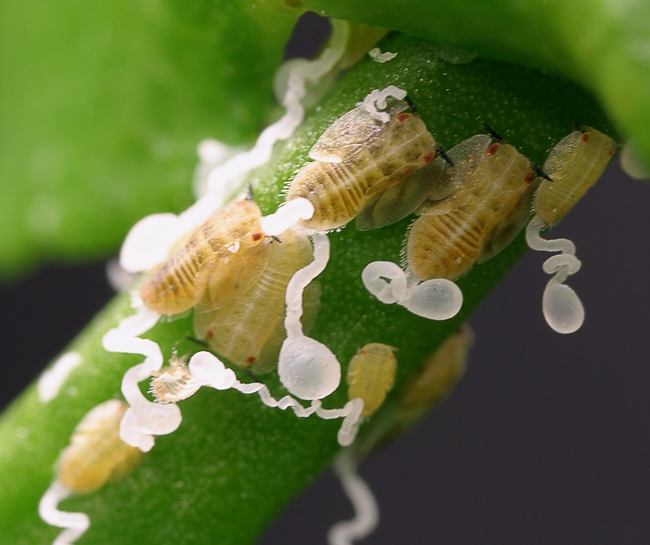
New resource for growers and homeowners waging Asian citrus psyllid battle

The site’s launch coincides with the announcement last month by the California Department of Food and Agriculture that six more psyllids were found in three Tulare County yellow sticky traps. In 2012, three psyllids were found on two traps and an eradication program ensued.
The new website was developed by Beth Grafton-Cardwell and Matt Daugherty, UCCE specialists in the Department of Entomology at UC Riverside, Karen Jetter, economist with the UC Agricultural Issues Center, and Robert Johnson programmer with the UC Agriculture and Natural Resources Informatics and GIS Statewide Program program. Funding for the site was provided by UC Agriculture and Natural Resources.
The website includes information on the psyllid's distribution in California, monitoring methods and treatment options. For example, the website suggests citrus farmers and homeowners not rely on yellow stick card traps to monitor for the pest.
“At certain times of the year, the yellow sticky cards are totally unattractive to Asian citrus psyllid,” Grafton-Cardwell said. “The cards are just color, but citrus flush is an attractive color and also emits irresistible volatiles or smells.”
The website advises farmers to regularly conduct systematic visual surveys along the margins of their orchards looking carefully at new green shoots and conducting tap sampling. To tap sample, spray a plastic surface with soapy water, position the plastic sheet underneath a branch and tap the branch above to dislodge adult ACP. The insects will stick to the filmy plastic where they can be studied with a magnifying hand lens to determine if they are psyllids.
If psyllids are found, the UC website outlines the immediate action that is required.
Adult psyllids should be placed in a container with 90 percent alcohol and reported to the county agricultural commissioner’s office so the insects can be tested for huanglongbing disease. Immature stages of the pest should be left on the tree so the ag commissioner’s office can make an official regulatory collection.

“Florida and Texas don’t have exactly the same insecticides that are available in California and the environmental conditions are different,” Grafton-Cardwell said. “Over time we will compare different treatments and determine how long they will protect the trees. Any new developments will be posted to the website.”
Because the goal in the San Joaquin Valley is eradication, Grafton-Cardwell recommends aggressive action against a psyllid infestation.
“The best approach is using two broad-spectrum insecticides within a short period of time,” she said. “No one insecticide will kill all the stages of the pest."
Another key to successful eradication is area-wide treatment coordination. Grafton-Cardwell suggests farmers work closely with their treatment liaisons and treat their orchards in a coordinated manner.
“The bigger the area being sprayed at the same time, the better,” Grafton Cardwell said. “If we get a blanket effect over the whole area, that’s been shown in Florida and Texas to have the greatest impact on the psyllid populations.”
The aggressive psyllid treatment aims to buy time for researchers to find long-term strategies for maintaining the California citrus industry in the presence of ACP and, especially, with the incurable and fatal citrus disease they spread, huanglongbing.

Posted by gocctvshop on October 7, 2013 at 12:27 AM